How to Master Sales Prospecting: Expert Tips, Techniques & Templates

Sales prospecting isn’t exactly everyone’s favorite part of selling. It's kind of like doing laundry—necessary but rarely exciting. But if you skip it, you'll quickly run out of clean opportunities (or socks).
So, grab your coffee, because I'm about to share everything you need to know about sales prospecting, sprinkled with a bit of humor and plenty of practical tips. Let's jump right in!
What Is Sales Prospecting?
Sales prospecting is basically detective work—identifying and researching potential customers who might actually want what you're selling. It involves sniffing out leads, understanding their needs, and qualifying them as potential buyers.
Why Is Sales Prospecting Important?

You could have the slickest product demo in the world—think Oscar-worthy performance—but if no one shows up to watch, you're just passionately pitching to an empty theater. That’s where prospecting comes in.
Sales prospecting keeps your pipeline full, which is basically sales speak for “you’ll always have someone to talk to who might actually buy something.” Without a consistent flow of qualified leads, you’ll be stuck refreshing your inbox, hoping for a miracle (spoiler: not a great strategy).
Here’s why this stage is your MVP:
- Discover New Markets: Ever feel like you’re fishing in the same pond over and over? Prospecting helps you wander into new waters—maybe even an undiscovered lagoon of ready-to-buy customers.
- Understand Your Audience: By prospecting regularly, you’re constantly learning what your audience cares about. Their pain points, goals, and quirks. (Yes, even that one guy who only replies at 3 a.m.)
- Grow Your Business: This one’s a no-brainer. More qualified leads = more conversions = more revenue = that raise you've been manifesting.
Bottom line: If sales were a road trip, prospecting is checking the fuel gauge. You could wing it, but don’t be surprised when you’re stranded halfway to quota-town.
The 7-Step Sales Prospecting Process

Follow these steps when conducting sales prospecting;
Step 1: Conduct Market Research
Think of this as prepping for a first date—but instead of stalking someone’s Instagram, you're digging into industry trends, competitor moves, and customer struggles. The goal? Show up informed, not clueless.
Here’s how to do it like a pro:
- Know the landscape: What’s trending in your industry? Is there a shift in buyer behavior? Are your competitors doing something sneaky-smart?
- Spy (ethically) on competitors: See what they’re offering and how they’re positioning it. What can you offer that they can’t?
- Study your customers: What keeps them up at night? What are they trying to achieve?
This isn’t just busy work. It's the secret sauce that helps you speak your prospects' language. When you show up with insights instead of generic fluff, people notice. You go from "just another rep" to "wow, they get me."
Step 2: Define Your Ideal Customer

You wouldn’t bring tacos to a vegan potluck (unless you enjoy awkward exits). The same logic applies in sales—you’ve got to know who actually wants what you're selling.
Defining your ideal customer means painting a crystal-clear picture of the type of person or business that:
- Has the problem your product solves
- Can afford your solution
- And—this is key—is in a position to say "yes"
To get there, ask yourself:
- What industry are they in?
- How big is their company?
- Who’s the decision-maker?
- What challenges are they facing right now?
- What do they value most when making a purchase?
Pro tip: Build a buyer persona—basically a detailed character sketch of your dream customer. Name them if you want. “SaaS Steve,” “Retail Rachel,” or “Nonprofit Nancy.” You’re not just selling to businesses, you’re solving real problems for real people.
The better you define your ideal customer, the less time you waste chasing down folks who were never going to buy in the first place.
Step 3: Build a Prospect List
Now that you know who your ideal customer is, it’s time to go full detective mode. This step is about creating a curated list of people or businesses that match your ideal profile—not just every rando on LinkedIn with a job title.
Here’s how to make a solid list:
- LinkedIn tools like Sales Navigator or tools like leadplay.io (for ethical scraping and smart filtering).
- Email finder platforms like Hunter.io, Apollo, or VoilaNorbert to collect verified contact info.
- Networking events, webinars, and even Reddit threads—prospects can be hiding anywhere.
- CRM data mining: Look at past customers—who converted easily? Clone them.
Remember, this isn’t about quantity. Having 50 laser-focused, high-potential prospects beats 500 “meh” ones any day. You want a list that doesn’t just look good on paper—it performs.
Step 4: Qualify Your Leads

Alright, you’ve got your list. Now comes the "is this worth my time?" phase. Not every lead is golden. Some are just shiny distractions.
Here’s how to qualify like a boss:
- Budget: Can they realistically afford what you’re selling?
- Authority: Are you talking to the decision-maker or someone who needs permission to buy coffee?
- Need: Do they have a pain point your product or service actually solves?
- Timeline: Are they looking to buy soon, or just “exploring options until Q4 of never”?
The goal here is to avoid wasting your energy on “looky-loos” and instead laser-focus on people who are both willing and able to buy. Treat your time like it’s on the stock market—invest it wisely.
Step 5: Choose Prospecting Channels
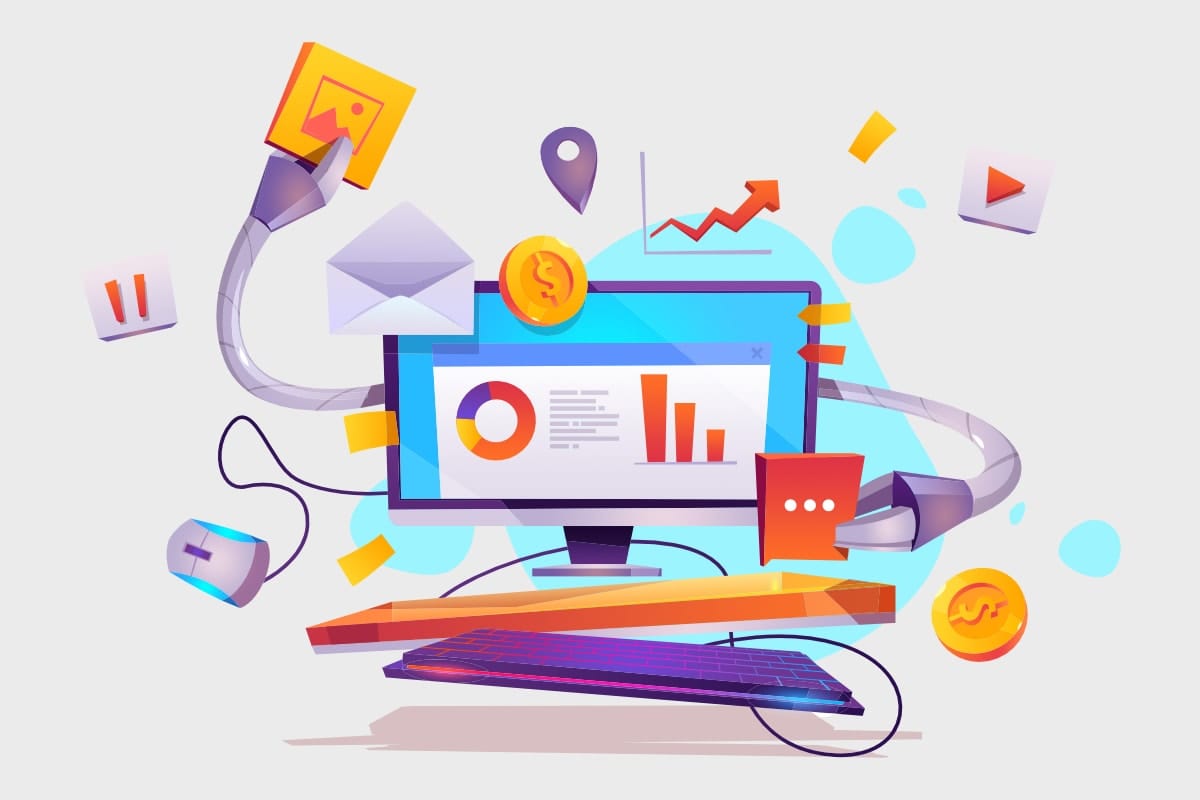
Now that you know who you’re targeting and that they’re legit, it’s time to figure out how you’re going to reach them.
Here are your go-to channels:
- Email: Still king if done right. Personalization is the throne.
- Phone calls: Yes, people still answer the phone—especially in B2B.
- LinkedIn messages: Great for non-pushy, professional intros.
- Social media DMs: Works in specific industries, especially if your brand is already present.
- In-person events or trade shows: Goldmine for deeper conversations.
Different prospects prefer different channels. If your audience is Gen Z tech founders, don’t be shocked if cold calling flops. Meet them where they are—not where you’re comfortable.
Step 6: Initiate Meaningful Conversations
This is where many reps go full robot mode—don’t be that person. Nobody likes a pitch slapped together from a template with zero personality. Sales is human to human, not software to inbox.
Instead:
- Lead with value, not your product. Nobody wakes up thinking, “I hope someone sells me something today.”
- Ask questions. Great ones. The kind that make them pause and say, “Good point…”
- Listen more than you talk. If you’re talking 80% of the time, you’re not selling—you’re monologuing.
- Ditch the scripts. Use them as a base, sure—but bring your own voice.
Build rapport, spark curiosity, and aim to help—not just sell. If it feels like a genuine conversation, you’re on the right track.
Step 7: Monitor and Improve Your Strategy

If sales is a game, this is your film review session. You can’t grow what you don’t track. And you definitely can’t keep doing the same thing expecting new results. (That’s the definition of insanity and...also a terrible prospecting strategy.)
What to track:
- Response rates by channel
- Which subject lines or openers actually work
- Meeting bookings vs. total outreach
- Time spent prospecting vs. conversion rate
Use your CRM to monitor trends. A/B test your email copy. Track call outcomes. Heck, journal your wins and flops if you’re old-school. The point is: treat prospecting like a living experiment, not a one-size-fits-all routine.
Best Practices for Effective Sales Prospecting

You’ve got the process down—but as with anything, how you do it matters just as much as what you do. These best practices are like that secret sauce at your favorite taco joint: subtle, but they make everything better.
✅ Personalize Everything
If you send the same cookie-cutter message to everyone, you might as well title it “Please Ignore Me.” Instead, reference something specific—like their recent blog post, a shared connection, or that weirdly entertaining LinkedIn poll they posted. It shows effort, and effort gets responses.
✅ Strategic Follow-ups
No, one email and a prayer won’t cut it. You’re not being annoying by following up—you’re being persistent. Just space it out and add value each time. Think of it like dating: interested, not clingy.
✅ Multi-channel Approach
Don’t rely on just email or just LinkedIn. Layer your outreach—maybe an email on Monday, a LinkedIn comment on Wednesday, and a follow-up call the next week. It keeps you visible without feeling spammy.
✅ Use CRM Tools
Trying to prospect without a CRM is like cooking a four-course meal blindfolded. Tools like HubSpot, Pipedrive, or Salesforce help you track outreach, follow-ups, and response data—so nothing slips through the cracks.
✅ Add Real Value
Drop some knowledge. Share an insightful blog post, a case study, or even a relevant meme (if your audience is cool like that). Be remembered as the rep who helped, not just the one who asked for 15 minutes.
Top 10 Sales Prospecting Tips

These aren’t just tips—they’re power moves. Think of them as the sales equivalent of espresso shots—each one designed to energize your outreach and boost your results.
1. Show Authenticity
Buyers can smell fake from a mile away (just like knockoff cologne). Authenticity means being honest, sounding human, and ditching the robotic tone. Say things like:
“Hey [First Name], not gonna lie—I found your recent blog post while procrastinating on LinkedIn, and it made me laugh. Also made me realize we might be able to help.”
That kind of genuine tone beats a generic, overly polished pitch every time.
2. Leverage Referrals

People trust their network more than strangers. That’s just science (and common sense). A warm intro from a current customer, mutual connection, or even a past coworker skyrockets your chances of a reply. Try this approach:
“Hi [Name], [Mutual Connection] suggested I reach out. We recently helped their team cut onboarding time by 40%, and I thought it might be relevant for your team too.”
It’s like getting a golden ticket into the inbox.
3. Segment Your Audience
Sending one-size-fits-all emails is like trying to sell flip-flops in a snowstorm. Segment based on:
- Role (CEO vs. Operations Manager)
- Industry (SaaS vs. Manufacturing)
- Company size (Startups vs. Enterprises)
Then tailor your messaging to speak their language. For a SaaS CEO, emphasize growth. For Ops Managers, highlight efficiency. Boom—better resonance, better responses.
4. Employ the 3×3 Method
You only need three minutes to impress. Research three things:
- Recent company news
- Their role/responsibilities
- Something personal (LinkedIn post, podcast, etc.)
Then use what you learn to craft a message that proves you’re not just another spam-slinger. Example:
“Congrats on the Series B funding—I saw your team’s gearing up for growth. I work with other fintech startups in this phase and thought we could help streamline your onboarding process.”
Tailored, timely, and totally non-cringey.
5. Maintain a Prospect Database

The scatterbrain approach won’t scale. Create a living, breathing spreadsheet or CRM list where you log:
- Prospect name and company
- Stage in the funnel
- Last outreach date
- Notes on past convos or pain points
That way, when someone finally replies three weeks later, you won’t be like, “Uhhh… remind me again who you are?”
6. Disqualify Poor Leads
Your time is precious. If a lead doesn’t match your Ideal Customer Profile (ICP)—whether it’s budget, timeline, or authority—walk away (or gently park them for later). Focus your firepower on prospects with real potential. It’s better to close 5 ideal clients than chase 50 tire-kickers.
7. Address Objections Directly
If someone says “We don’t have the budget” or “Now’s not the right time,” don’t run for the hills. Engage. Ask:
- “What are you currently prioritizing?”
- “When would be a better time?”
- “What kind of ROI would make this worth it for you?”
You’re not bulldozing through objections—you’re understanding and navigating around them. Jedi-level stuff.
8. Use LinkedIn and Email Tools Wisely
Automation tools like leadplay.io, Apollo, or Hunter are powerful—but dangerous in the wrong hands. Don’t send 300 identical emails and call it a day. Instead:
- Use tools to gather info and scale outreach
- Personalize the first 2–3 lines
- Automate follow-ups with a human tone
Think of automation as your co-pilot—not the whole crew.
9. Personalize Your Pitch
Go beyond “Hi [Name].” Reference their role, recent content, company goals—anything that makes them feel seen.
“As Head of Operations, I figured you’re probably juggling 57 things right now. We help teams like yours cut down workflow bottlenecks so you can breathe between meetings.”
Now that feels like it was written for them.
10. Provide Valuable Content
Be a resource, not a nuisance. Share:
- A helpful case study
- An industry insight
- A relevant article or tool
This positions you as someone worth talking to, even if they’re not ready to buy today. You’ll be the one they think of when they are.
Difference Between Leads and Prospects

This distinction is crucial—but many salespeople blur the lines between the two. Understanding it will make your prospecting process sharper and more effective. Here's how you can tell them apart:
Leads: The Casual Interest
A lead is like someone checking out your product on the shelf. They’ve shown some level of interest (maybe they visited your website, downloaded a whitepaper, or signed up for a free trial), but they haven’t yet committed. Leads are people in the early stages of the buying journey. You might only have their contact info, but you don’t know much about them yet—this is where research comes in.
Key Characteristics of Leads:
- Initial Interest: They’ve taken some action, like signing up for a newsletter or engaging with your social media.
- Limited Information: You may have an email address or phone number, but not much more. They could be one of many “potential” buyers.
- Not Yet Qualified: Just because they’ve shown interest doesn’t mean they’re a good fit. They still need to be nurtured before moving forward.
Prospects: The Serious Players
A prospect, on the other hand, is a lead who has been qualified. This means you’ve gathered enough information to confirm that they’re a real potential buyer who fits your Ideal Customer Profile (ICP). They’ve engaged with your content, but now they’ve shown a willingness to take the next step. Maybe they requested a demo or asked for a quote. Prospects are much closer to making a purchase decision.
Key Characteristics of Prospects:
- Qualified Interest: They've met certain criteria (budget, need, decision-making authority) that make them worthy of serious attention.
- Engaged: They have had more meaningful interactions—such as asking for a proposal or demo—indicating a stronger likelihood to convert.
- Ready for Tailored Outreach: Prospects are now part of the sales funnel and are expecting targeted communication about how your solution fits their specific needs.
Prospecting vs. Lead Generation
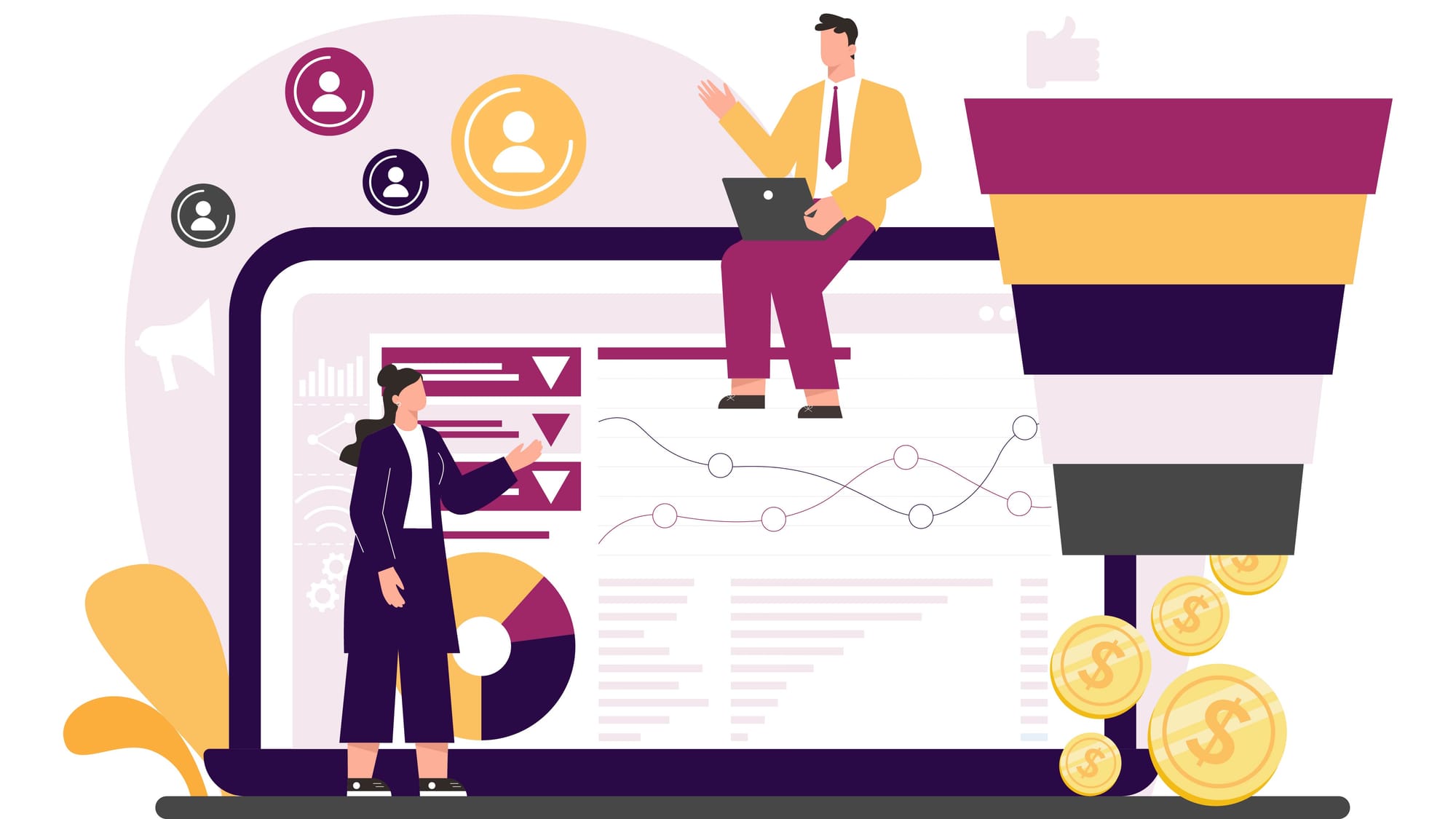
The terms "prospecting" and "lead generation" are often tossed around like they're interchangeable, but trust me, they’re distinct concepts. Here’s how to tell the difference and use both effectively in your sales strategy:
Prospecting: The Detective Work
Prospecting is all about actively seeking out leads—it's a process that requires you to hunt for potential customers and evaluate them for fit. You’re doing more than just casting a net and hoping for a catch. You’re identifying leads, qualifying them, and then deciding whether they’re worth pursuing.
In other words, prospecting is your pre-sales phase: you’re trying to find the right leads and move them into your pipeline. The key here is you’re the one doing the legwork—identifying, reaching out, and nurturing.
Examples of Prospecting Activities:
- Researching companies that fit your Ideal Customer Profile (ICP)
- Cold calling or emailing potential leads
- Using LinkedIn to find decision-makers
- Attending networking events to meet potential clients
- Leveraging referrals to get introductions
Lead Generation: The Attraction Game
Lead generation is more about creating demand—it’s about getting people to come to you rather than having to go after them. This can involve strategies like content marketing, paid ads, SEO, or hosting webinars. Essentially, lead generation casts a wider net to attract people who have some interest in what you're offering, and your job is to qualify and convert them.
Lead generation is the top-of-funnel work. It’s like the marketing side of things—when your inbound content, campaigns, and ads generate interest, the leads come to you.
Examples of Lead Generation Activities:
- Running Facebook or Google Ads targeting specific demographics
- Offering gated content (like eBooks or whitepapers) to gather contact information
- Creating blog content or videos that answer common industry questions
- Running webinars or virtual events to generate sign-ups
- Utilizing social media ads to drive awareness and interest
The Key Differences:
- Initiation: Prospecting is active (you’re seeking out leads), while lead generation is passive (leads find you).
- Focus: Prospecting focuses on qualifying leads for the next steps in the sales cycle. Lead generation focuses on attracting leads in the first place.
- Position in Sales Funnel: Prospecting happens further down in the funnel—once you have a lead, you prospect them to decide if they’re a good fit. Lead generation occurs at the top, where you’re casting a wider net.
How They Work Together
While prospecting is the critical first step in identifying and qualifying leads, lead generation is the engine that keeps the pipeline full. When done right, they complement each other:
- Lead generation fills the top of the funnel with interested parties.
- Prospecting takes that interest and nurtures it into actual sales opportunities.
Both are necessary for a healthy pipeline—without lead generation, you wouldn’t have any leads to prospect; without prospecting, your leads wouldn’t get the nurturing they need to turn into customers.
Timing of Sales Prospecting
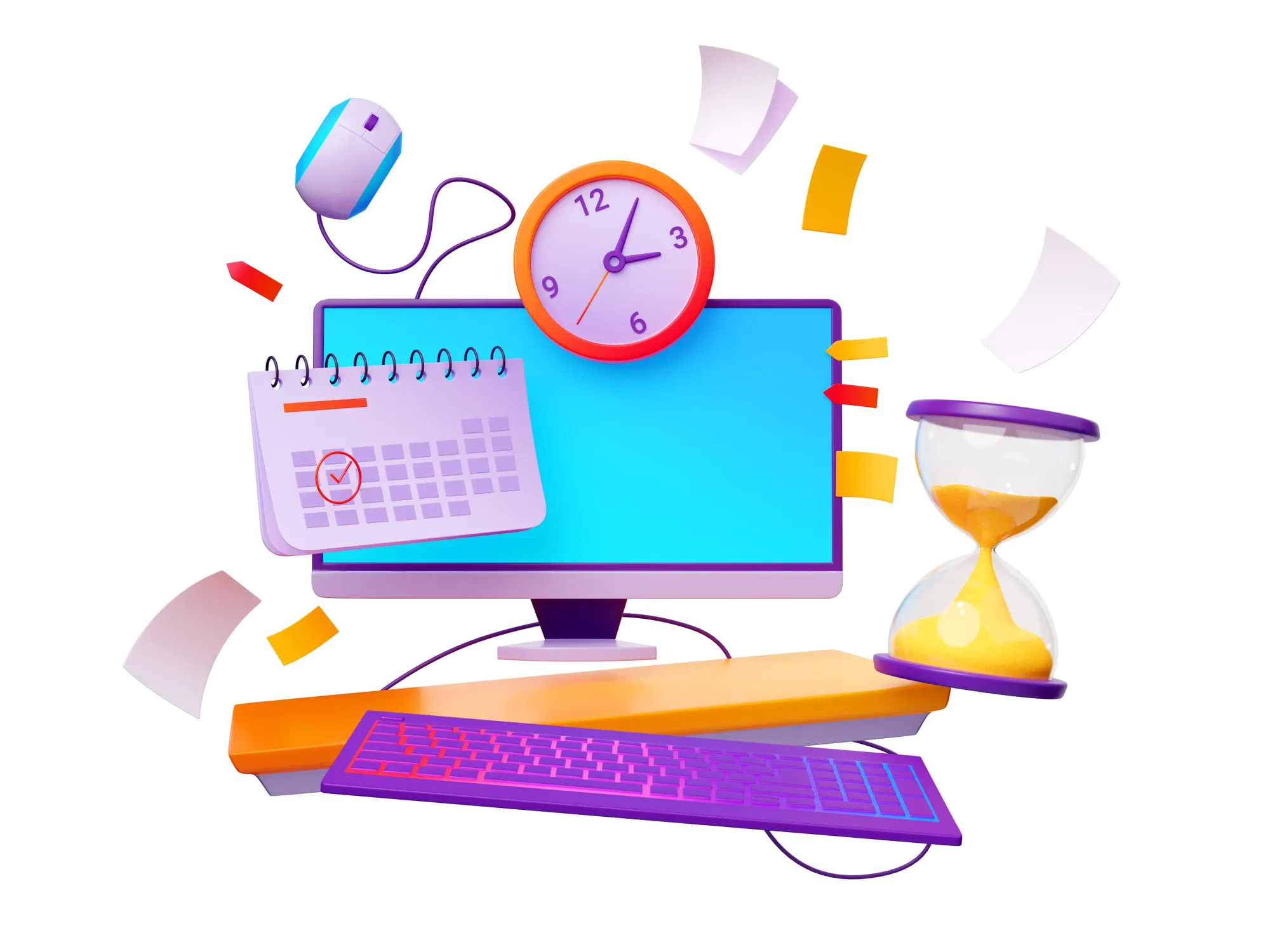
Timing is everything, especially in sales. A good prospecting strategy isn't just about knowing what to say—it's about knowing when to say it. Timing can make or break the success of your outreach, so let's break down the key considerations:
Prospecting: The Early Bird Gets the Worm
Sales prospecting is all about timing—reaching the right people when they’re most open to your solution.
Best Times to Prospect:
- When They Show Interest: If they’ve visited your site or engaged with content, strike while the curiosity is hot.
- During Business Changes: Product launches, funding rounds, or hiring sprees signal potential need.
- Start of a Quarter: New goals and fresh budgets make companies more receptive.
- End of Year: Companies often spend remaining budgets or plan for the next year.
Timing Tactics:
- Follow Up Fast: Respond within 24 hours to stay top-of-mind.
- Automate Follow-Ups: Use tools to trigger timely emails.
- Know Decision Cycles: Some industries take longer—plan accordingly.
Times to Avoid:
- Mondays & Fridays: Too hectic or too relaxed—stick to Tuesday–Thursday.
- End of Month: Prospects may be focused on wrapping up, not starting new deals.
Best Times of Day:
- 9–11 AM: Morning focus is high.
- 1–3 PM: Good for follow-ups as people settle into their afternoon rhythm.
Personalized Timing Wins: Tailor your outreach to what’s happening in the prospect’s world. The more relevant you are to their current needs, the better your timing.
Inbound vs. Outbound Prospecting
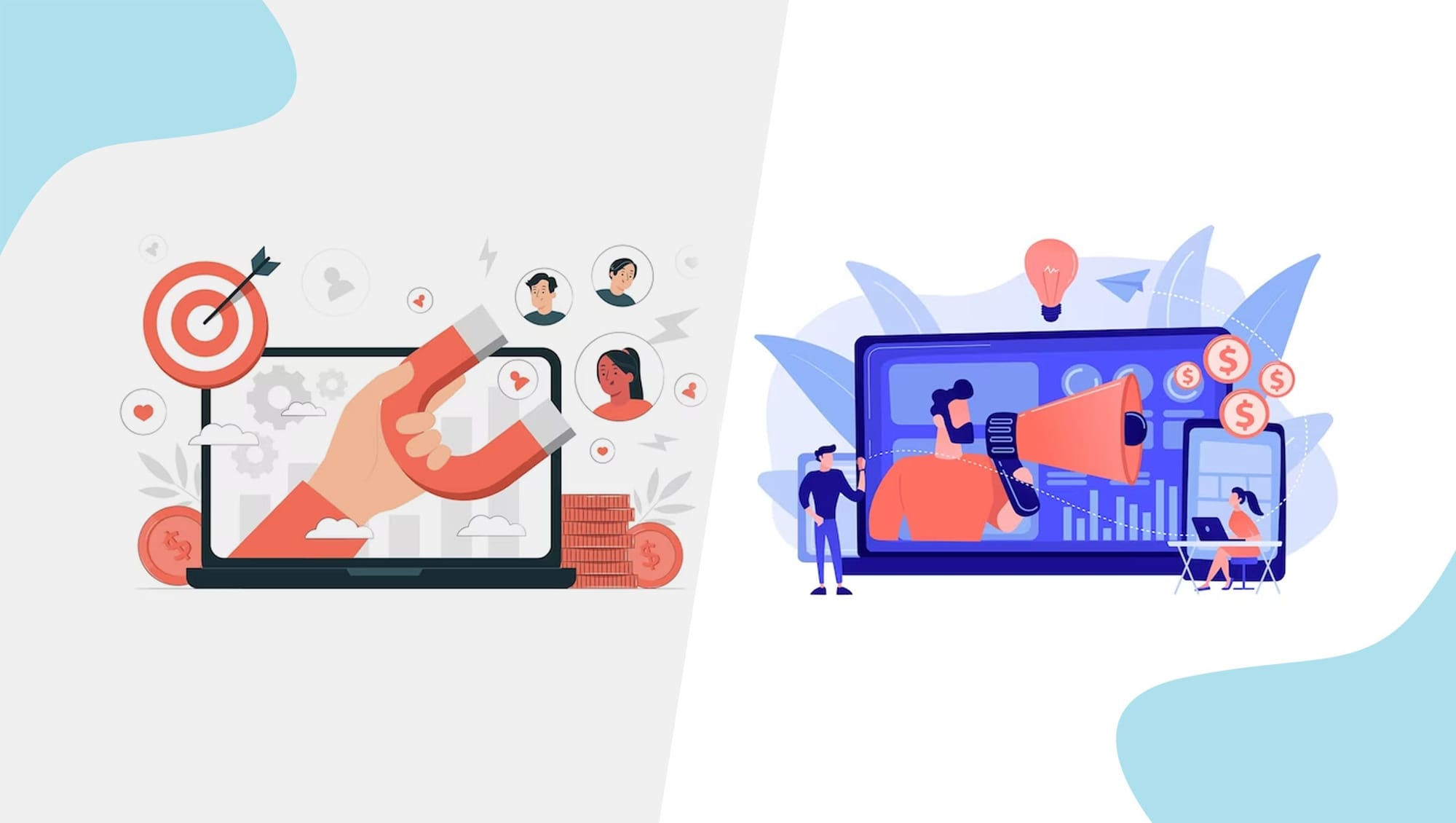
In the world of sales, there are two primary approaches to prospecting: inbound and outbound. Both have their place, but understanding the differences will help you decide when and how to use each strategy effectively.
Inbound Prospecting: Let Them Come to You
Inbound prospecting is all about attracting leads through valuable content and organic efforts. Rather than hunting down prospects, you create a magnetic pull that draws them to you.
How It Works:
- Content Marketing: By creating blog posts, whitepapers, eBooks, videos, and other educational materials, you offer value upfront. Prospects come to you because they are interested in learning more or solving a problem they face.
- SEO: Optimizing your content to rank higher in search engines means you can attract organic traffic from individuals who are already searching for solutions.
- Social Media Engagement: Sharing insightful, helpful content on social platforms helps you build relationships and naturally attract people to your brand.
- Paid Ads & Retargeting: Paid advertising (like Google Ads or Facebook Ads) can help direct interested prospects to landing pages designed to capture their info.
The Benefits of Inbound Prospecting:
- Less Intrusive: Inbound is generally less aggressive. Prospects are coming to you because they’re interested.
- Higher Conversion Rates: Because inbound prospects are already interested in your solution, they tend to convert at a higher rate.
- Long-Term Strategy: Building an inbound strategy can result in sustainable, long-term lead generation.
Outbound Prospecting: The Direct Approach
Outbound prospecting, on the other hand, is when you take the initiative to reach out to prospects directly. This is more of a “hunter” mentality—finding leads that fit your ideal customer profile and engaging with them through direct channels like email, cold calls, or social outreach.
How It Works:
- Cold Calling: Reaching out to potential customers over the phone, typically using a list of leads or contacts that fit your target audience.
- Cold Emails: Sending personalized, targeted emails to prospects in hopes of generating a response.
- Social Selling: Using LinkedIn and other platforms to reach out directly to decision-makers and engage with them via messages or content.
- Direct Mail: While less common today, some businesses still use physical mailers to reach potential leads.
The Benefits of Outbound Prospecting:
- Immediate Control: You control the outreach. You can identify and reach out to high-priority leads and get in front of them quickly.
- Scalability: Outbound activities can be scaled quickly—especially with automation tools that help you send personalized outreach at scale.
- Faster Results: If done right, outbound prospecting can yield quick results by targeting specific decision-makers.
B2B vs. B2C Prospecting Differences
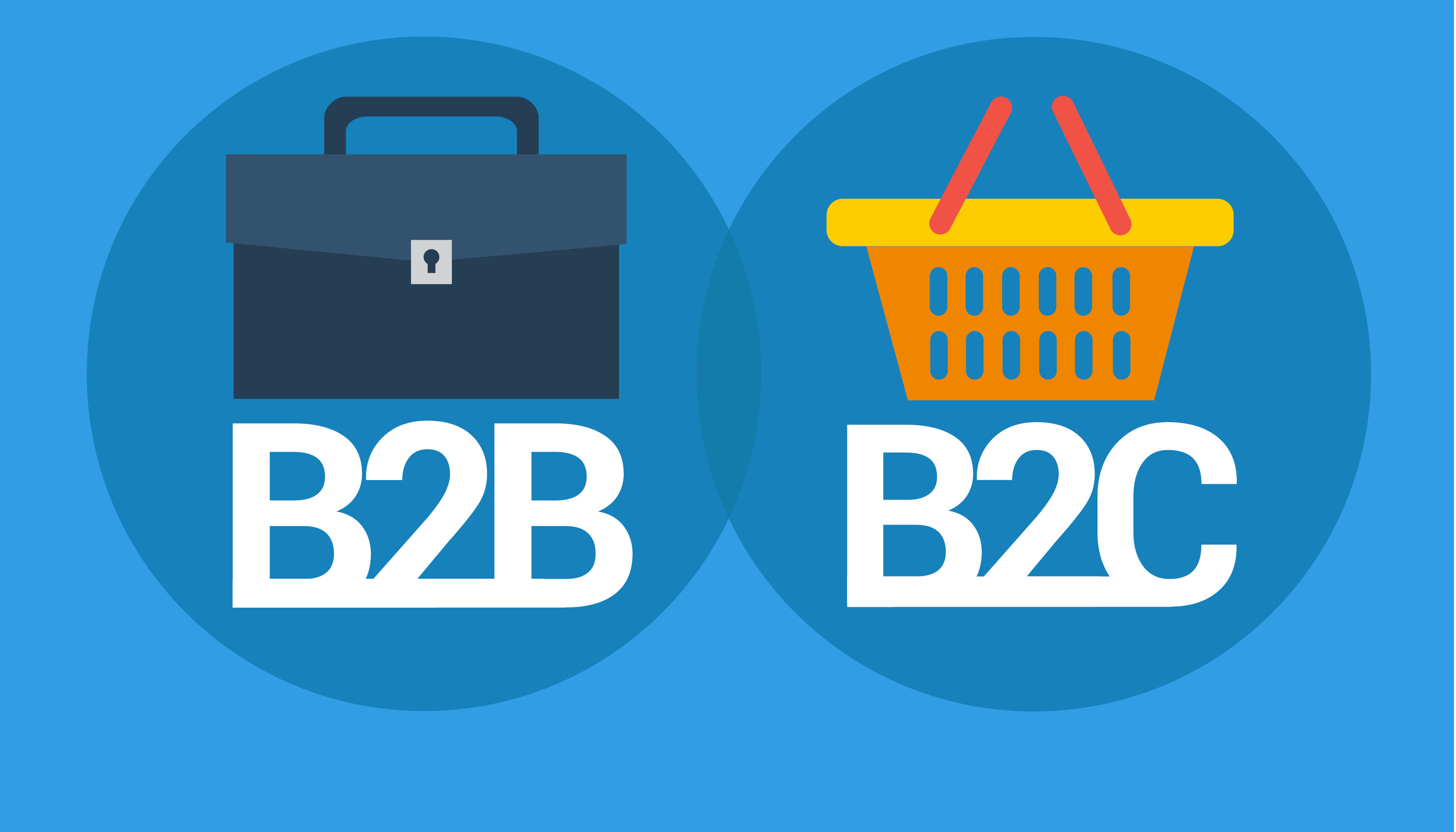
When it comes to sales prospecting, your strategy will vary significantly depending on whether you're targeting businesses (B2B) or consumers (B2C). Both types of sales have their own unique challenges, and understanding the differences can help you craft a more effective prospecting strategy.
B2B Prospecting: The Complex Dance
B2B prospecting focuses on selling products or services to other businesses. This usually involves a longer sales cycle and multiple decision-makers. The emphasis here is on relationship-building, consultative selling, and tailored solutions.
Challenges of B2B Prospecting
- Multiple Decision-Makers: In B2B sales, one lead often represents multiple stakeholders—CEO, CFO, department heads, or purchasing managers. Each person will have different concerns and priorities, which means you have to tailor your pitch to each.
- Longer Sales Cycles: Businesses typically take longer to make purchasing decisions. They need to vet solutions, compare alternatives, and get approval from various departments.
- Larger Deals: B2B sales tend to involve larger transactions with more significant implications. The stakes are higher, and so is the amount of trust and credibility you need to establish.
B2B Prospecting Process
- Identify Key Players: Research the right individuals in the organization who would benefit most from your product or service. Use LinkedIn, company websites, or databases like ZoomInfo to find decision-makers.
- Personalize the Pitch: A generic pitch will not resonate. Tailor your outreach to address the company’s specific needs, pain points, and objectives.
- Provide Value: In B2B sales, you’re not just selling a product—you’re solving a business problem. Offer whitepapers, case studies, and data to prove your solution works.
- Follow-Up Strategy: Given the longer sales cycle, your follow-up needs to be persistent but thoughtful. Keep checking in with new value propositions, case studies, and solutions.
B2C Prospecting: The Speedy Sales Game
B2C prospecting, on the other hand, involves selling directly to consumers. These transactions tend to be simpler, quicker, and involve fewer decision-makers—often just the individual consumer themselves.
Challenges of B2C Prospecting:
- Faster Decision-Making: Consumers usually make quicker decisions than businesses. In most cases, they can make the purchase on their own without approval from a team or board.
- Lower Transaction Value: The cost per unit is generally lower in B2C sales, but volume can make up for this.
- Higher Volume of Leads: Unlike B2B, where you're dealing with a few high-value prospects, B2C often means dealing with a large number of leads. Your approach must be scalable and effective in handling this volume.
B2C Prospecting Process
- Target the Right Demographics: Since you’re targeting individuals, segment your prospects based on their demographics, interests, behaviors, and purchasing history. Tools like Facebook Ads or Google Analytics can help you hone in on these segments.
- Focus on Emotional Appeal: Unlike B2B, where logic often drives purchases, B2C sales frequently appeal to emotions. Highlight the personal benefits of your product—how it improves the consumer's life or solves their immediate needs.
- Simplify the Buying Process: Make it as easy as possible for the consumer to buy. A smooth and fast checkout process can be a major differentiator in closing B2C deals.
- Utilize Discounts and Promotions: B2C consumers love special offers. Implementing discounts or limited-time promotions can drive faster conversions.
Key Differences in Prospecting Strategies
| B2B Prospecting | B2C Prospecting |
|---|---|
| Longer sales cycles | Shorter, quicker decisions |
| Multiple decision-makers involved | Single decision-maker (the consumer) |
| Larger deals, more significant purchases | Smaller transactions but higher volume |
| Focus on relationship-building and trust | Emotional appeal, simplicity, and convenience |
| Personalized, tailored sales approaches | More standardized or generalized marketing |
Effective Sales Prospecting Email Templates
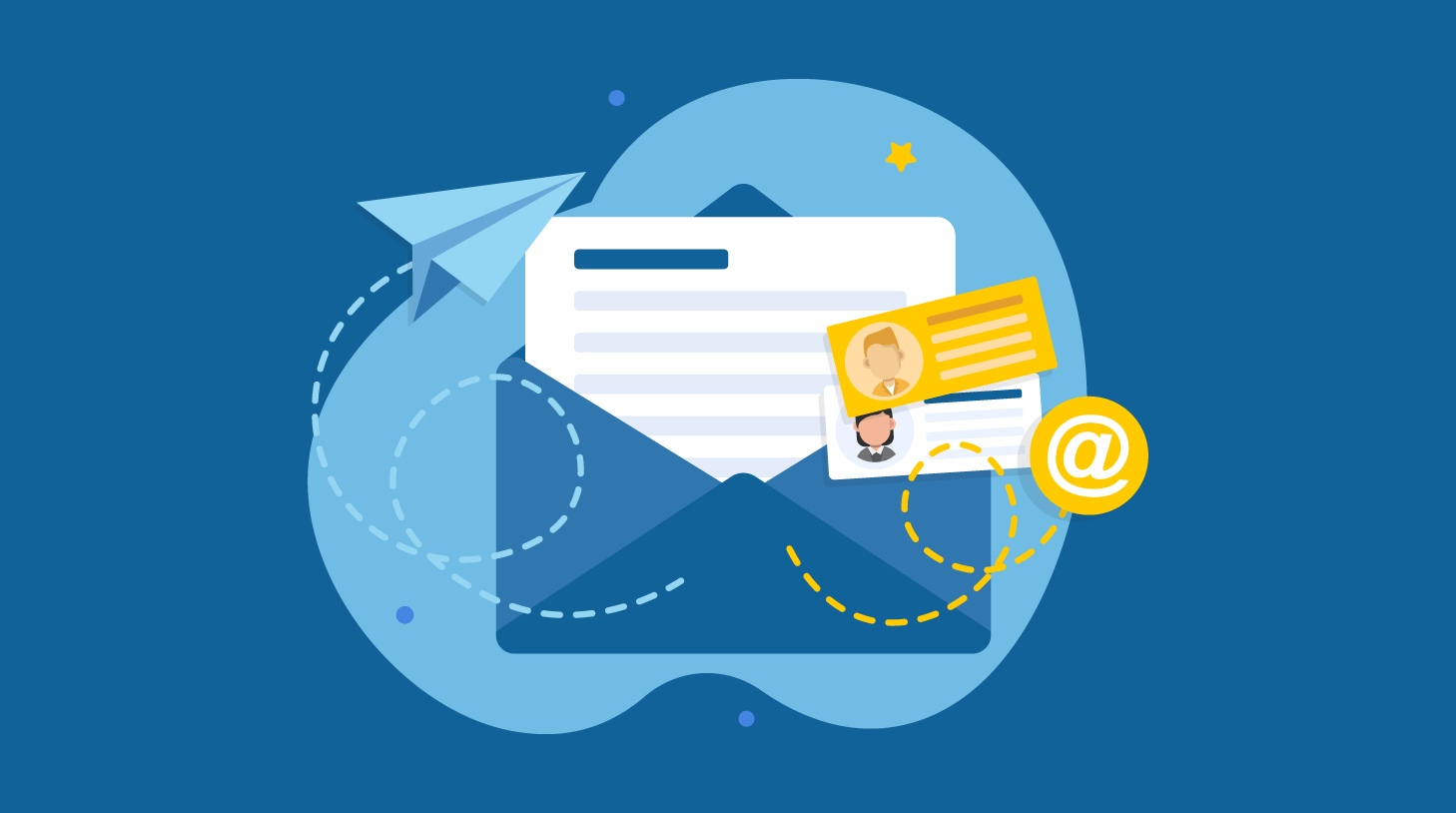
Email is one of the most powerful tools in your sales prospecting toolkit. However, sending generic or poorly crafted emails won’t get you far. To make the most of your prospecting efforts, your email must grab attention, be concise, and spark curiosity. Here’s how to make your sales emails stand out in a crowded inbox.
Key Components of a Great Sales Prospecting Email
- Personalization: Always tailor your email to the specific prospect. Show that you’ve done your research and understand their needs.
- Compelling Subject Line: Your subject line is the first thing prospects see. If it doesn’t grab their attention, they won’t open your email. Keep it short, clear, and relevant to the recipient.
- Concise and Clear Body: Time is precious—get to the point quickly. No one wants to read a novel. Make your message clear, with a focus on how you can help solve their problem.
- Call-to-Action (CTA): Always include a clear CTA. It could be scheduling a call, requesting a demo, or simply asking if they’re interested in learning more.
- Professional Tone with a Personal Touch: You want to sound approachable and genuine, not like a robot. The best emails balance professionalism with a personal, friendly tone.
Sales Prospecting Email Templates

Here are a few tried-and-true email templates that can help you kick off meaningful conversations with your prospects:
1. The Introduction Email
Subject: Quick Introduction: [Your Company] and [Prospect’s Company]
Hi [Name],
I’m [Your Name], and I work with [Your Company], where we help businesses like [Prospect’s Company] solve [relevant problem or pain point]. I noticed you’ve been [mention recent activity or news about their company] and thought you might be interested in exploring how we can help with [specific solution].
Would you be open to a quick chat sometime this week?
Best regards,
[Your Name]
[Your Position]
[Your Contact Information]
2. The Follow-Up Email
Subject: Just Checking In – [Your Company] and [Prospect’s Company]
Hi [Name],
I wanted to follow up on my previous email and see if you had a chance to think about how [Your Company] can help [Prospect’s Company] with [specific solution]. I understand how busy things can get, so I just wanted to check in and see if you’re still interested in discussing further.
Let me know if you’d be open to a brief call at your convenience.
Best,
[Your Name]
[Your Position]
[Your Contact Information]
3. The Value-Added Email
Subject: Helpful Resource: [Topic Relevant to Prospect’s Business]
Hi [Name],
I thought you might find this [resource, article, case study, etc.] useful as it addresses [specific issue] that companies like yours often face. Here’s the link: [insert link].
If you’re interested, I’d love to chat about how we’ve helped others in [prospect’s industry] overcome similar challenges.
Looking forward to hearing your thoughts!
Best,
[Your Name]
[Your Position]
[Your Contact Information]
4. The Referral-Based Email
Subject: [Referral’s Name] Suggested I Reach Out
Hi [Name],
I hope this email finds you well! [Referral’s Name] mentioned that you might be interested in exploring [product/service]. I wanted to reach out directly to see if we could set up a time to discuss how we’ve helped other companies in your industry.
Do you have 15 minutes for a quick chat this week?
Best,
[Your Name]
[Your Position]
[Your Contact Information]
5. The Closing Email
Subject: Final Follow-Up: Are You Still Interested in [Product/Service]?
Hi [Name],
I wanted to send one final email to check if you’re still interested in [product/service]. I understand that priorities shift, but if this is something that could help [prospect’s business], I’d love to connect.
If now’s not the right time, no worries. I’m happy to stay in touch and follow up later if needed.
Best regards,
[Your Name]
[Your Position]
[Your Contact Information]
Using Prospecting Automation Effectively

Using prospecting automation effectively involves leveraging tools like leadplay.io for streamlined LinkedIn outreach. These tools can help you save time by automating repetitive tasks such as connection requests and follow-ups.
However, it’s important to balance automation with personalized touches, such as custom messages or tailored follow-ups, to maintain authentic interactions. This combination ensures that while you're scaling your efforts, you’re still engaging prospects in a way that feels human and genuine.
Elevate Your Sales Prospecting
Sales prospecting doesn’t have to be a grind. With the right strategies, tools, and mindset, you can turn it into a streamlined and effective process that brings in consistent results. Here’s a quick recap of everything we’ve covered to help you elevate your sales prospecting game: